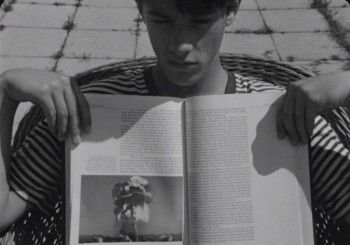
How does the family life of an artist filter into his or her art? Beginning with the practices of KwieKulik—a duo of artists of the 1970s who plugged their young son into their poetic-structural “for-camera activities” or “activities with a camera” (as they called it)—we observe the way in which family relationships are put to the test in the public forum through the medium of art.
The idea that family life comprises the subject of a work of art is often considered along the lines of a metaphor or a universal statement, which interferes with the idea that it is really about the real lives of real people. In effect, the obvious question of how family—partnerships, marriage, children—impacts the work of the artist, whether these relations support or impede his or her work, is rarely asked out loud. Here another question comes up: is art meant to distance one from empathy and resolution with regard to family tensions or, quite the opposite, to help gain a deeper understanding of this dynamic?
Initiating artistic actions with the participation of family members is a sort of radical realism; art in the first person, bogged down not only with the inherent risks of being an artist, but of personal risk, too. What is at stake here is not only the life of the artist, but the lives of those nearest. For many artists, family forms a sort of elementary, easily accessible platform for their work, but its manipulation brings with it complete disclosure with regard to one’s privacy and a drastic narrowing of the space between the artist and audience. It is also a polemical method on the subject of art itself, with artistry understood as a process of interpreting reality through abstraction and aesthetic practices.
The exhibition at Raster maintains this familial scale; bringing together artists who have all been associated, mostly long and closely, with the gallery. Thus it is also an attempt to consider the role of the gallery not as a physical space, but as an artistic family of sorts, a community that is driven not only via the strategies of the art market, but also through the humanity of emotion.













